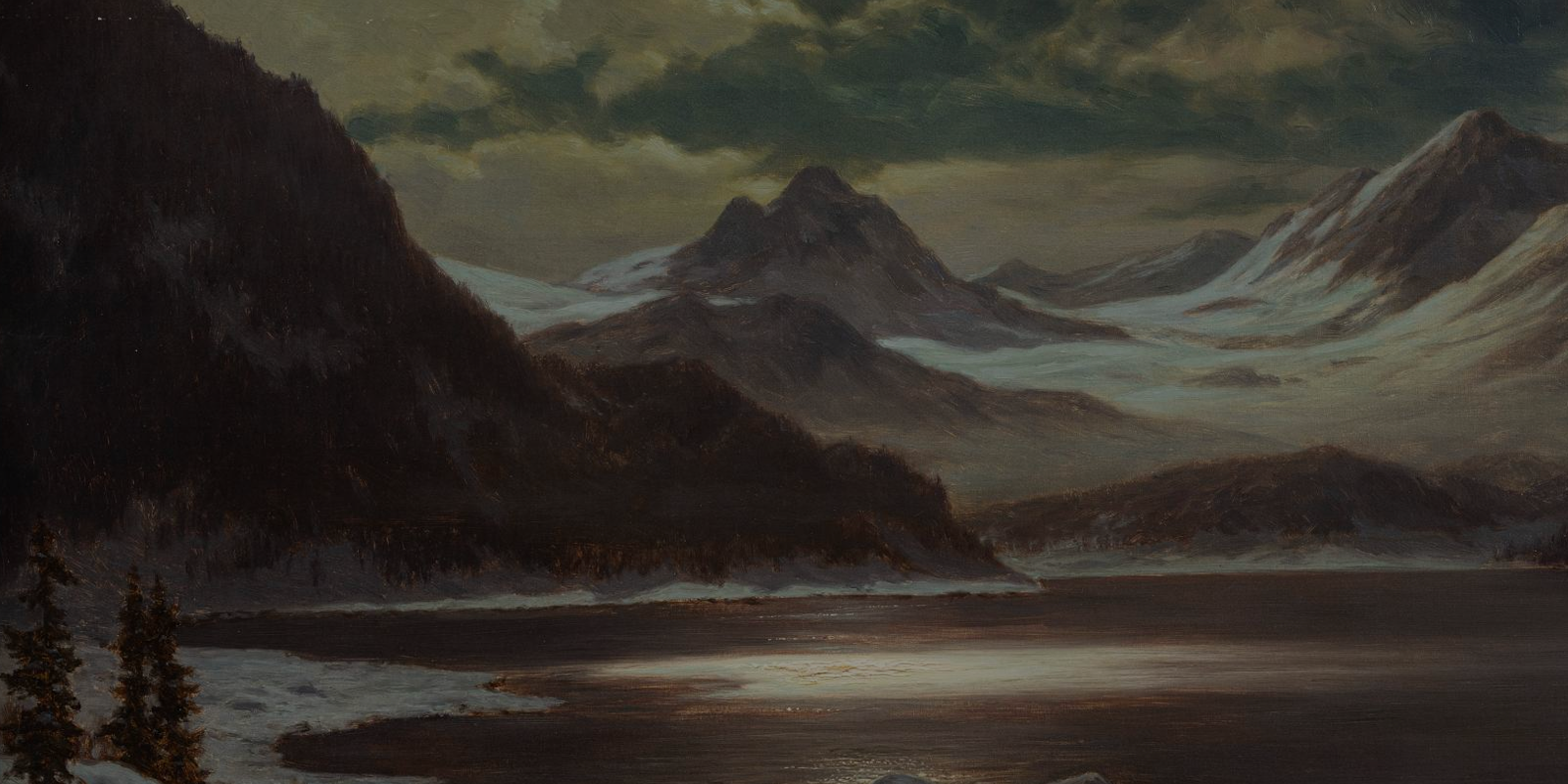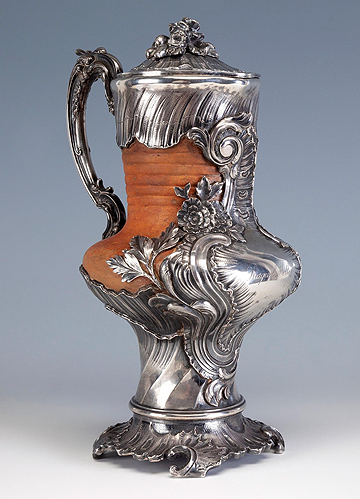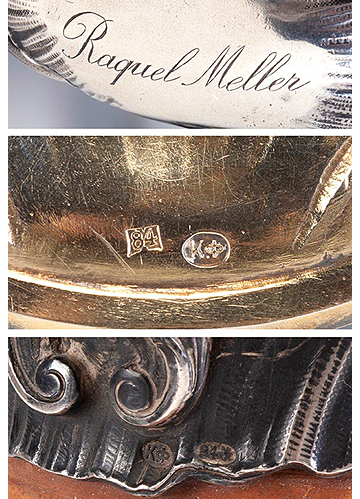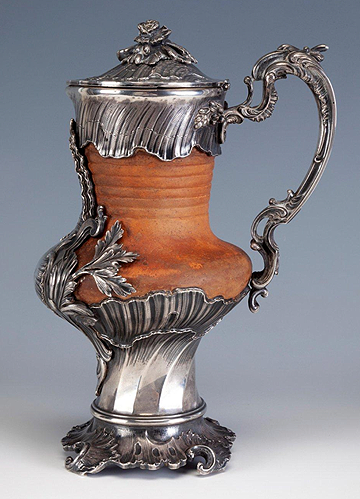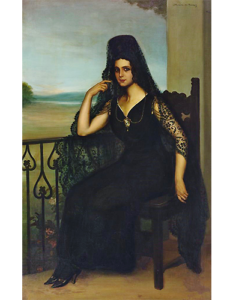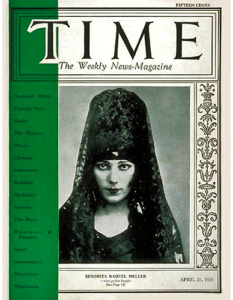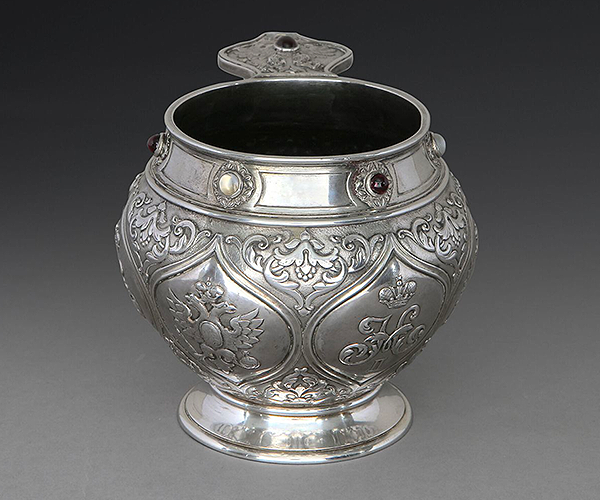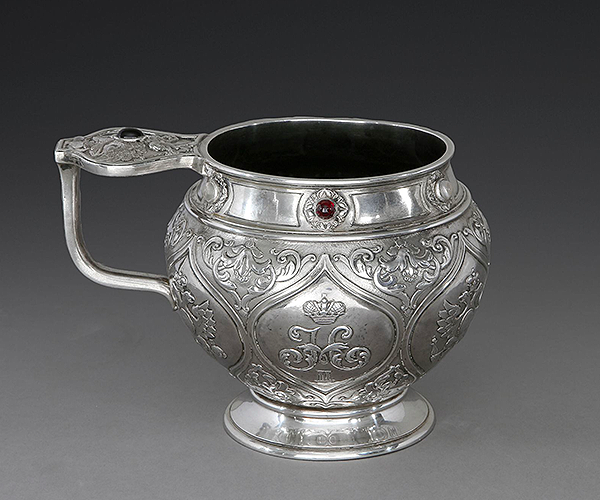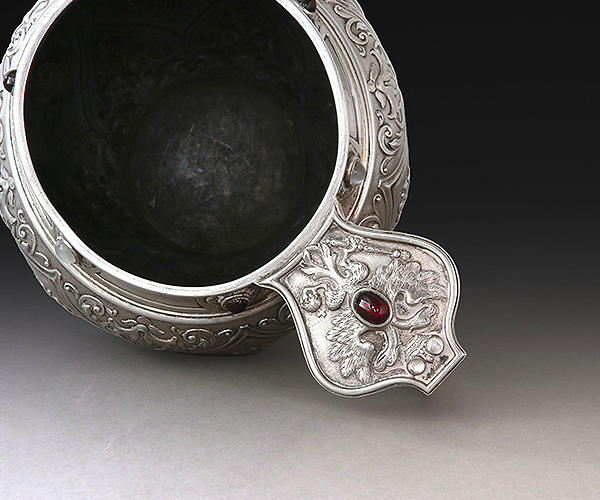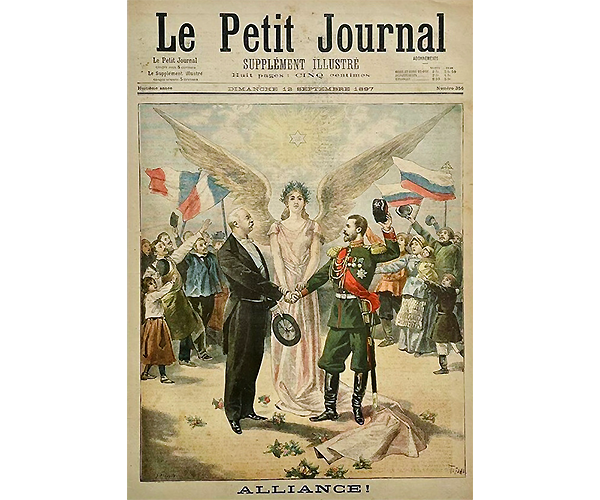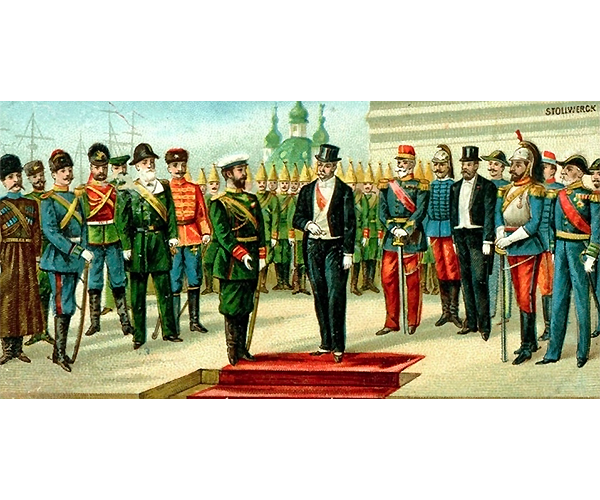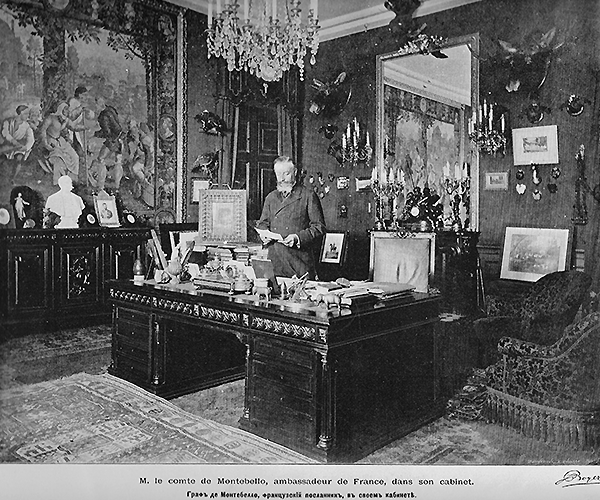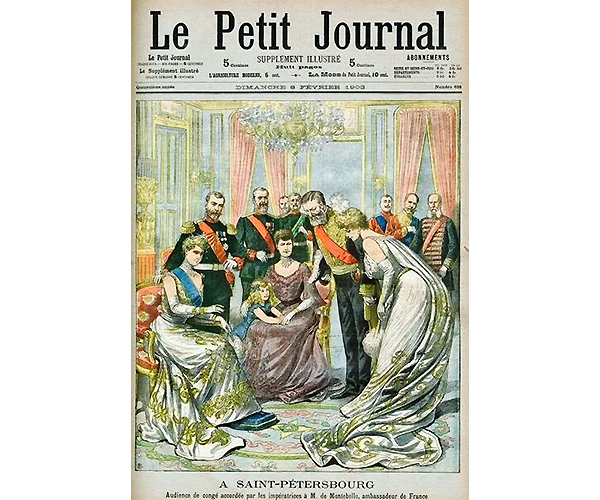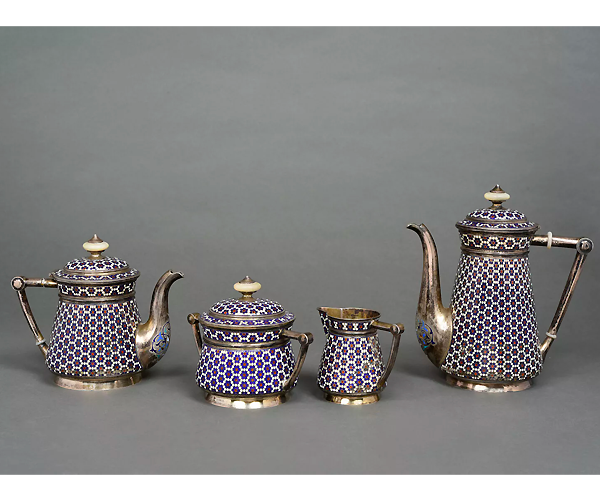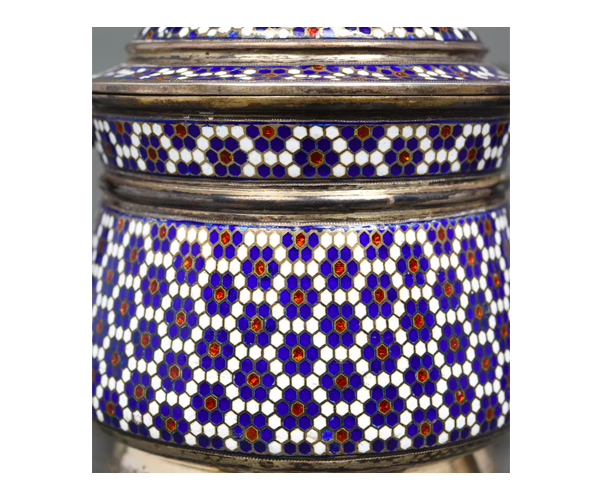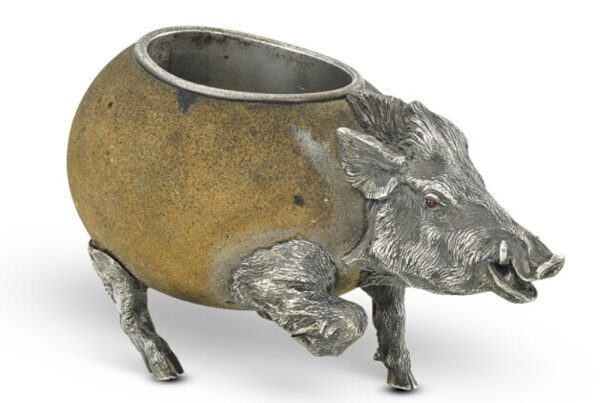Bargains To Be Found – If You Seek Far And Wide
DESPITE PUTIN setting out to destroy Russian civilization, and despite the demise of Russian Week, there is still interest in Russian Art.
Gone are the days when folks would get together in London twice a year for champagne, vodka cocktails and opulent parties. All the promotion and advertising that accompanied these events spread the gospel of Russian Art across the globe. The market was well-oiled (in more ways than one), and easy to access and navigate.
Not any more. Sotheby’s and Christie’s seem keener to put a spanner in the Russian market than lubricate it. Their ‘Compliance Departments’ are petrified of breaching sanctions and have come with rules that are way too complicated. Today, when I buy something, I have to sign some kind of statement that I’m buying it for myself alone. Now hang on! I’m a legitimate dealer! So are dozens more: we buy, broker and sell things – as we have done all our lives (well, until recently). Why should Sotheby’s know if I sell the stuff? By the way, I’m very interested in who Sotheby’s sell stuff to, too! What’s good for the goose is good for the gander!
On the plus side, rumour has it that, due to uproar from dealers and collectors, Sotheby’s will start printing catalogues again soon — at last for their more important sales. If true, that’s mighty welcome. Looking through auction websites to obtain information about past sales is a disaster: they’re all so poorly structured.
*
Now that Christie’s Russian department sadly is no more, Bonham’s barely breathing and Sotheby’s scaled down to near extinction, the scope for the Russian market in small auction houses has risen exponentially. I’ve always reviled the strangling power of the big houses, so maybe a bit of respite is now in the offing for small guys like me, and others.
But, with the Russian market so fragmented, it has become far more complicated to search for and acquire things. Expertise is not so strong at smaller or peripheral auction firms who don’t special in things Russian: confidence in what you’re buying diminishes. Nobody’s going to travel to Helsinki or Kansas City to check out a piece of Fabergé!
Or Barcelona – where an unusual and wonderfully extrover silver and terracotta Fabergé Wine Decanter, 24cm tall, appeared in the Setdart saleroom back on May 18 (Lot 18). Its modest €4,000-5,000 estimate was handsomely surpassed as it sold for €26,000 (inc. 18% buyer’s premium). Fabergé rarely had recourse to terracotta, and the extravagant neo-rococo silverwork is resplendent. I’m positive that the big auction houses would have generated a heftier result, but Setdart (sounds like a firm that makes pub games – no wonder I’d never heard of them) are hardly renowned for their Fabergé prowess. Lord knows when they last got to handle another piece of Fabergé – in my memory, Spanish auctions rarely offer anything Russian.
Setdart, May 18, Lot 18, Fabergé Wine Decanter
The reason this thirst-quencher ended on the block in the Catalonian capital is because of a previous owner. It is inscribed on the front with the name of Raquel Meller, who lived in Barcelona from 1939 until her death in 1962. Who she? I hear you say. Once Spain’s biggest superstar, that’s all – a music-hall artiste and movie actress famed on both sides of the Atlantic. Raquel (real name Francisca Marqués López) graced the cover of TIME magazine in 1926, and was painted by Sorolla and (twice) by Julio Romero de Torres, whose Semana Santa (1910), showing Raquel in the traditional costume of Holy Week, sold at Setdart for €223,000 in 2007, and is now in the Romero de Torres Museum in his native Cordoba. In 1913 he recorded Raquel in a pose à la Goya alongside writer and critic Enrique Gómez Carrillo (whom she later briefly married) in the traditional costume of Eve. The work, coyly titled Venus de la Poesía, is now in the Museo de Bellas Artes in Bilbao.
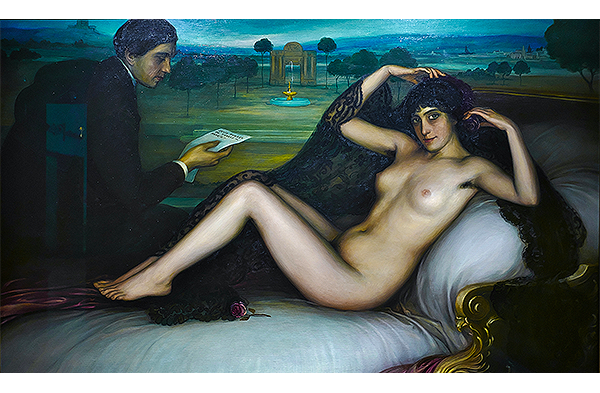 Clad Raquel, Well… Unclad
Clad Raquel, Well… Unclad
France, slightly to the north of Barcelona, is a far better source for things Russian. Despite rich Russians sucking up antiques by the ton over the past 25 years or so, France remains a fertile hunting ground – nowhere more so than the Hôtel Drouot, the chaotic central auction venue in Paris that hosts daily sales by dozens of small firms.
Like Millon. Take their 300-lot Art Russe sale in Paris on December 12, which included a Fabergé Duck made from earthenware with silver mounts, in some sort of Russian Art Nouveau style (Lot 174). The duck was 16cm long and coloured kinda hot pink. It swam up with a not-that-enticing €7,000-10,000 estimate but quacked its way to €40,000 hammer (€52,000 all-in) – astonishing given its indifferent condition.
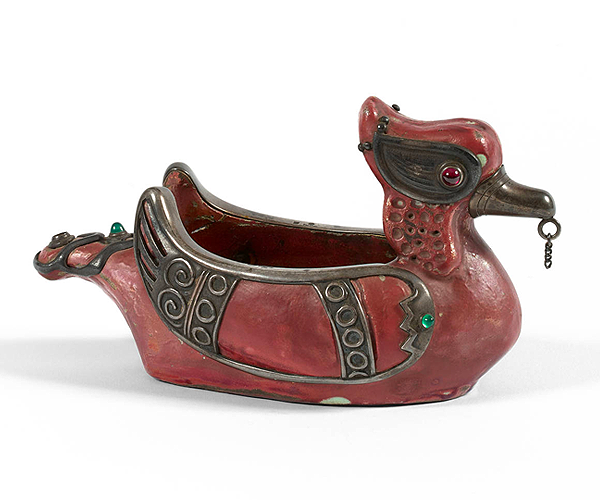 Millon, December 12, Lot 174, Fabergé Duck
Millon, December 12, Lot 174, Fabergé Duck
The funky fowl didn’t look like something I’d wanna own. Lots of chips, old restoration – stuff like that: my restorer said the ceramic part needed plenty of work. Even the auction house admitted there was ‘faulty firing to the earthenware under the base, a crack in the earthenware inside the left wing, and restorations to the neck and inside the tip of both wings’ – and that was without ‘one chrysoprase cabochon missing from the tail,’ the silver mounts being ‘slightly oxidized’ (i.e. black), and the absence of an ‘element that must have hung from the tip of the beak.’ Jeez! Sounds like it was dug up near Stonehenge.
All credit to sale expert Maxime Charron for being so up-front about the condition. ‘Mad Max’ is one of France’s leading experts in the Russian field. Wherever his auctions take place, his expertise is right up there – clean, honest and reliable. I’ve done lots of business with the guy, and respect his views and opinions.
That said, items like this duck – where restoration is so obvious, and more is needed – hardly ever inspire me, however rare or interesting the piece. I like words like pristine, perfect and flawless.
Fabergé produced only a token number of items blending metal and faïence – and the condition of this item probably explains why. The birdy is very rare: I remember a few similar examples coming on the market quite a long time ago – all quite a bit larger, and sold way above estimate. So maybe my fuss over the condition of this duck is a bit harsh. I’ve not seen more than half-a-dozen pieces like this in the past forty years.
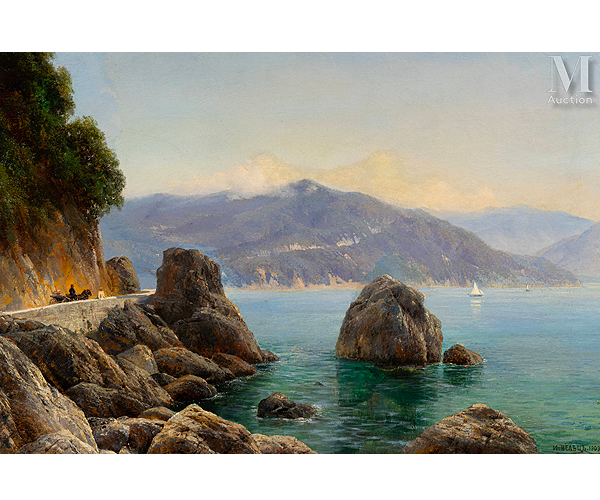 Millon, December 12, Lot 110, Ivan Weltz – Crimean Bay
Millon, December 12, Lot 110, Ivan Weltz – Crimean Bay
There were above-estimate prices for two decorative waterscapes at this Millon sale: a 1909 Ivan Weltz View of a Bay in Crimea at €55,900, and Choultsé’s 1922 Moonlight above Lake St-Moritz at €54,600. The Weltz caused the bigger surprise, perhaps helped by its Karelian birchwood frame.
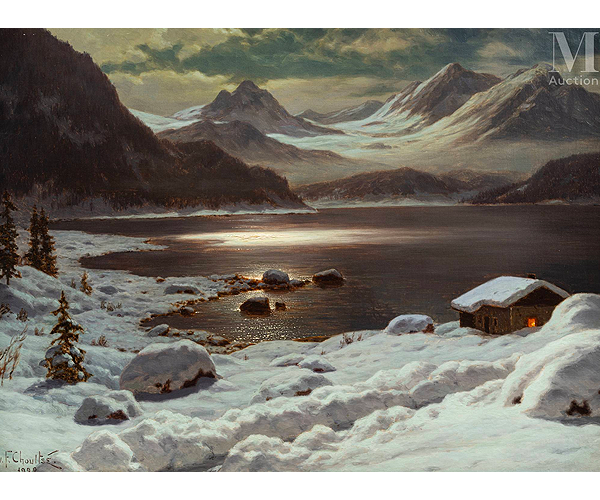 Millon, December 12, Lot 116, Ivan Choultsé – St Moritz Lake
Millon, December 12, Lot 116, Ivan Choultsé – St Moritz Lake
Millon continued next day (December 13) with 140 more items of Art Russe – most of them Socialist Realist paintings, some selling for as little as €80. By and large nobody knows the names of these artists, so no wonder they sell so badly. They were professional artists – members of the official Soyuz (Artist’s Union) – who worked for a salary in return for churning out X number of works every month. There are hundreds of thousands of these works in storage in Russia. Who on earth wants them?
Highlight of Millon’s second session was Lot 351: a restored 51 cm Soviet Vase from 1927 with a brown and mauve design by Sergey Chekhonin – Artistic Director of the State (ex-Imperial) Porcelain Factory in Leningrad where the vase was fired – commemorating the 10th anniversary of the October Revolution. The vase was consigned from Germany and described as ‘restored’ – though no details of the restoration were given. It came with a €15,000-20,000 estimate yet sold for €62,000 hammer.
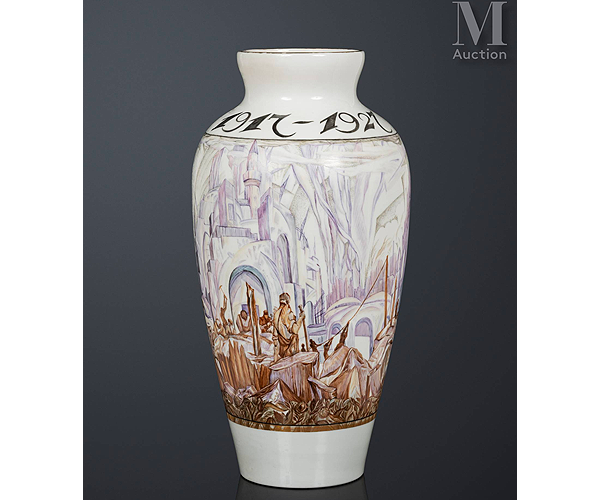
Millon, December 13, Lot 351, Soviet Porcelain Vase 10th Anniversary of The October Revolution
Soviet anything causes me to puke: the USSR was a country that brought nothing but grief to people all over the world, not to mention immense deprivation and suffering for those born on Russian soil. Who the hell collects all this déjà vu crap with Communist symbols? Apparently the sort of people who still fondly relish the Gulag and extol all the criminals buried in the Kremlin Wall. Who can these people be? Putin and his henchmen? During the short existence of the Third Reich, the Nazis also produced lots of ‘art’ – which hardly differed from that of their Soviet partners.
And the Nazis also liked white porcelain. Only they didn’t nick it from imperial palaces, they made it themselves – originally (from 1936) in Allach, a suburb of Munich; then, from 1940, at Dachau Concentration Camp. It had the some sort of subject-matter as Soviet porcelain – albeit extolling Germans, not Russians, as the master race.
De Baecque & Associés, December 8, Lot 147, Fabergé Imperial Presentation Charka
A few days earlier (December 8), also at the Hôtel Drouot in Paris, De Baecque & Associés sold what they called a silver Fabergé ‘Imperial Presentation Charka’ (Lot 147) for €26,000 against an estimate of €3,000-5,000. It wasn’t a charka – but it is a very nice object: a 10 x 14cm bowl with a handle, ringed with Imperial eagles and the crowned H II ciphers of Nicholas II, and with coloured hardstones set in to the handle and rim. The workmaster was Michael Perkhin, which dates it to 1903 at the latest.
History and Imperial provenance always find avid collectors. And boy does this bowl have history! It was, the catalogue declared, a ‘gift from Tsar Nicholas II to the French Ambassador’ and had been consigned by his descendants. The Ambassador’s identity was not given – no one likes to see their name up in lights when they’re flogging the family silver.
The Anonymous Ambassador was Gustave Lannes, Count of Montebello (1838-1907). He arrived in St Petersburg from Constantinople, having previously been French Ambassador to the Ottoman Empire. His grandfather was one of Napoleon’s favourite generals: Marshal Lannes, killed at the Battle of Essling outside Vienna in 1809. His father, Napoléon Lannes, was French Ambassador to Russia from 1858-64. His mother was English – daughter of the M.P. for Dover.
Ambassador Montebello is credited with engineering the Franco-Russian Alliance in 1897, and organizing President Faure’s visit to Petersburg to lay the foundation stone of Trinity Bridge on August 24 that year: Montebello appears above right, with red kepi and sword, on the lid of a box of chocolates immortalizing that splendiferous ceremony. Montebello is shown below left in his Embassy study; the caption reads ‘Comte de Montebello sees the policy of rapprochement and alliance, of which has been one of the leading proponents, today triumph.’
The Count of Montebello was a close buddy of the Romanovs. Nicholas II attended – as godfather – the christening of his grandson Nicolas in the Palace of Compiègne in September 1901. The Tsarina and Dowager Empress granted the Count a Farewell Audience upon his departure from St Petersburg (see above right) – perhaps the Count was gifted his Fabergé bowl at the same time. Nicholas II’s favourite uncle, Grand Duke Alexis (1850-1908), was a regular guest at the Count’s 18th century Château de Stors, just across the river from Auvers-sur-Oise, final haunt of Vincent van Gogh.
The Fabergé bowl is not the only item of Montebello heritage to have appeared in a small French saleroom of late. A stash of Montebello family documents surfaced in Louviers (Normandy) in April 2021, selling for €750 at a sale bizarrely devoted to Art Décoratif et Art du Jardin (‘Decorative & Garden Art’) by veteran auctioneer Emmanuel Prunier (‘Vieille Prune,’ as he is affectionately known in the trade). The stash included a photo taken at Nicholas II’s 1896 coronation – of Chinese statesman Li Hung Chang (1823-1901), who was in Russia to negotiate a treaty so humiliating that its contents were kept secret until 1922 (in return for a colossal loan, Russia was given the run of north-east China).
Boisgirard-Antonini, November 27, Lot 132, Gustav Klingert – Enamel Tea Set
Down in Nice on 27 November 2022, a four-piece Gustav Klingert tea- and coffee-service (Moscow 1880s) roared to a premium-inclusive €66,976 at Boisgirard-Antonini against a slightly stingy €6,000-7,000 estimate (Lot 132). Silver spouts, and silver/ivory knops and ‘Etruscan’ handles, provided a sober contrast to the items’ honeycomb patterning in blue, white and champlevé red enamel. Klingert is not a big name like Fabergé: he was just a good, solid maker – a bit of a mass-producer not known for any masterpieces, and he used this honeycomb pattern many a time. So the price here was a bit astonishing: €67,000 for such a common design seems way over the top. Yesteryears, Welcome Back!
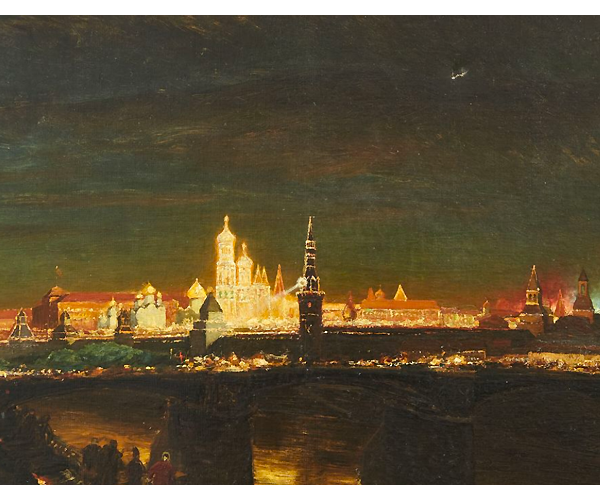 Hôtel Drouot, November 22, Lot 158, Julius Klever, Oscar Hoffmann – The coronation of tsar Alexander III
Hôtel Drouot, November 22, Lot 158, Julius Klever, Oscar Hoffmann – The coronation of tsar Alexander III
The coronation of Nicholas II’s father was celebrated at the Hôtel Drouot on November 22 (Lot 158), when Art Research Paris offered The Kremlin Illuminated for the Coronation of Tsar Alexander III (1883) by Yuli Klever & Oskar Hoffmann. This historical, but not all that exciting, preparatory work in oil on canvas, 59 x 107cm, was given a €12,000-18,000 estimate but pulled in a very respectable €80,600 – Klever’s more usual forest scenes don’t bring much these days. A slightly smaller, but more finished, version was sold by Bukowskis in Helsinki back in 1997.
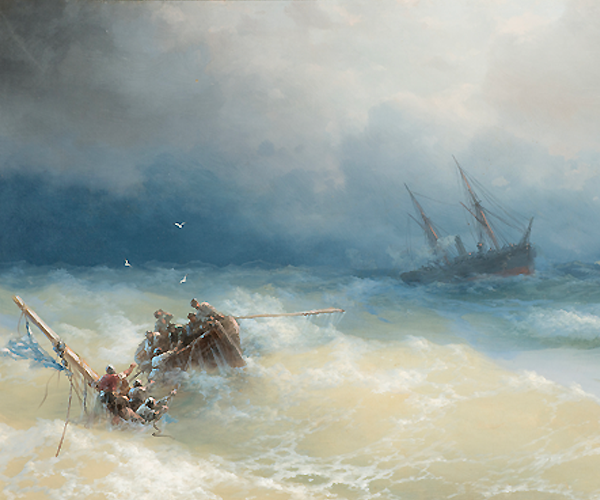
Bukowskis, November 27, Ivan Aivazovsky – Shipwrecked
Talking of Bukowskis, their online Winter Sale (November 16-27) featured a middling-sized Ayvazovsky canvas, Shipwrecked (1887), consigned by a Finnish private collector. It measured 60 x 96cm and zoomed past its €200,000-300,000 estimate to €550,000 hammer (€674,000 with premium) despite some cracked paintwork and signs of restoration. I was taken aback by that price. It’s not a work I’d particularly relish having on my wall, and late Ayvazovksys do not compare with his earlier period.
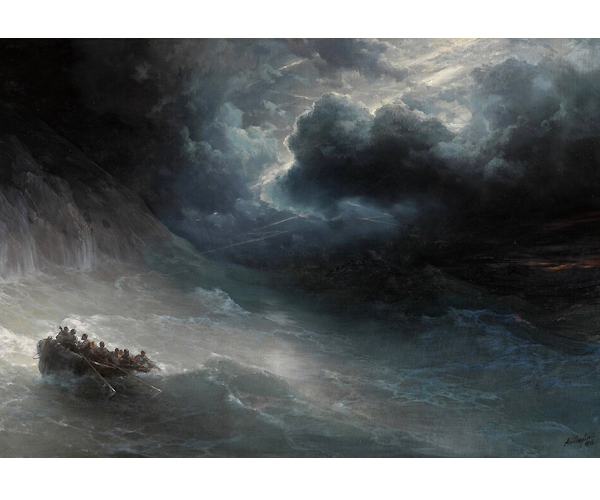 Sotheby’s, December 7, Lot 36, The Wrath of the Seas
Sotheby’s, December 7, Lot 36, The Wrath of the Seas
There was another impressive Ayvazovsky price at Sotheby’s London on December 7 (Lot 36). It cropped up rather incongruously during a sale of Old Masters with a 17th century Flemish Bouquet on the cover, and was melodramatically entitled The Wrath of the Seas. At 71 x 110cm it was slightly larger then the Bukowksis Shipwreck, and painted the year before. Sotheby’s imaginatively included Géricault and Turner in their sales pitch, and to my utter surprise this ghoulish vision doubled its already stiff £600,000-800,000 estimate to reach £1.4m (plus premium). I heard on the grapevine that it was bought by ‘a European collector’ (with ‘European’ not meaning ‘Russian’). I had wondered if it would even sell! Both Ayvazovsky prices were out of the ordinary,given the works’ less than stellar quality – very, very strong prices, even by the standards of the Good Old Days! Probably expensive Christmas presents bought by millionaires who weren’t sure what else to buy their loved ones.
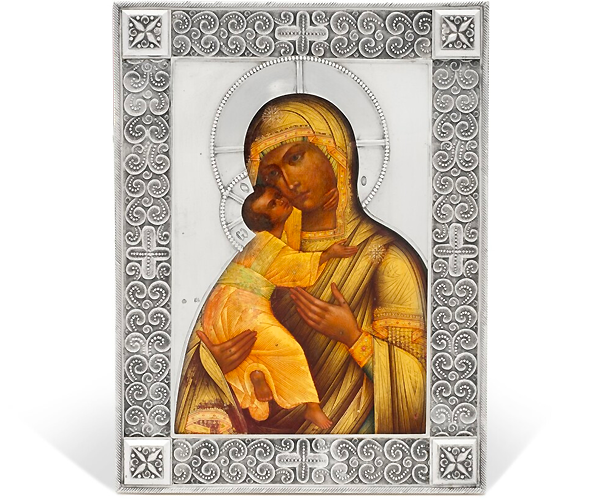
Sotheby’s, October 19, Lot 586, Fabergé Silver-Mounted Icon of the Vladimir Mother of God
Finally, if you looked hard enough, there was brief iconic Russian interest (Lot 586) to a sale at Sotheby’s New York on October 19, meaninglessly entitled Collecting Across Continents. Its only Russian item of note was an 18 x 13.5cm Vladimir Mother of God, beautifully painted on wood and encased in a Fabergé silver oklad, chased with foliate scrolls. It fetched $30,000 ($24,000 hammer) – a steal compared to that ugly pink duckling in Paris.
*
Now back to where we started: Spain, where St Petersburg’s State Russian Museum opened a money-spinning subsidiary (along the lines of the Hermitage Amsterdam) in Malaga in 2015. Known as the Colección Museo Ruso, and housed in a converted tobacco factory, it has been attracting around 100,000 visitors a year – with a permanent display of a hundred works spanning the 15th to 20th centuries, supplemented by twice-yearly exhibitions.
The Russian Museum had been happily dispatching dollops of not quite top-rank stock to Picasso’s home town until Putin invaded Ukraine last February, and EU sanctions forced it all to be shipped back to St Petersburg in May. It is ‘not known if the works will return or whether the museum space will be renamed.’
Meanwhile, showing commendable ingenuity, the Museo Ruso has come up with a replacement Collection of 19th & 20th Century Russian art – amassed over the last two decades by ‘London businesswoman Jennifer Green.’

